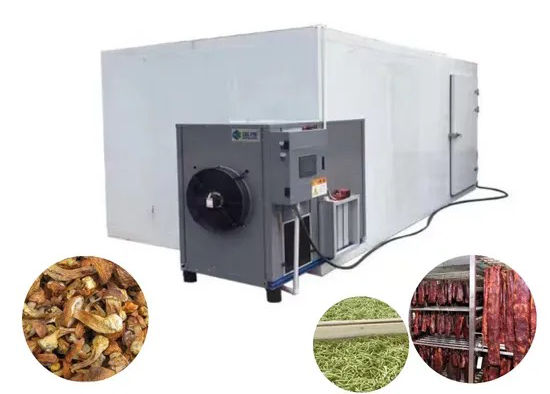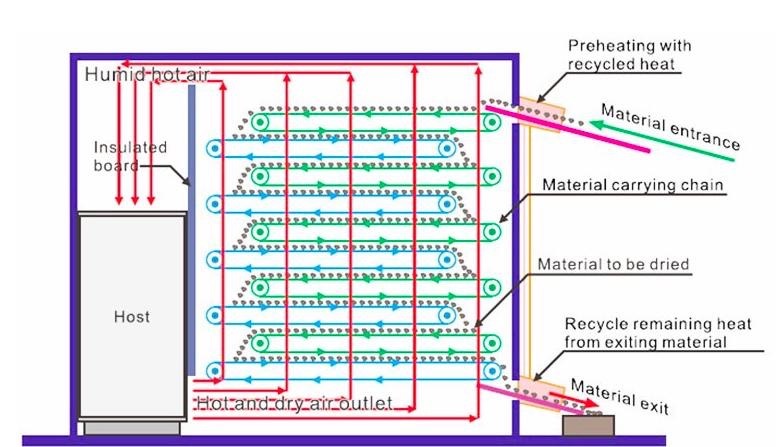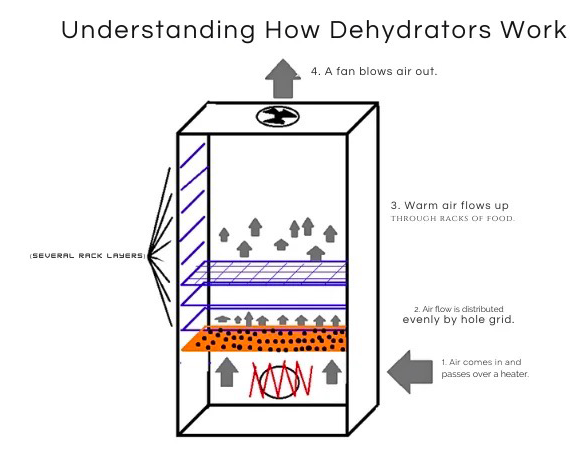
Content Menu
● Understanding the Basics of Food Dehydration
● How Food Dehydrators Operate
● The Dehydration Process
● Benefits of Using a Food Dehydrator
● Types of Foods Suitable for Dehydration
● Tips for Effective Dehydration
● Common Misconceptions About Food Dehydrators
● Different Methods of Food Dehydration
>> 1. Sun Drying
>> 2. Oven Drying
>> 3. Air Drying
>> 4. Solar Drying
● Choosing the Right Food Dehydrator
● Creative Uses for Dried Foods
● Conclusion
● FAQs
>> 1. What types of foods can I dehydrate?
>> 2. How long does it take to dehydrate food?
>> 3. Do I need to pre-treat fruits before dehydrating?
>> 4. Can I use my oven instead of a dehydrator?
>> 5. How should I store dehydrated foods?
● Citations:
Food dehydrators are innovative appliances designed to remove moisture from food, thereby preserving it for longer periods. This article will explore the mechanics behind food dehydrators, their benefits, practical applications, and tips for successful dehydration.

Understanding the Basics of Food Dehydration
Food dehydration is a method of food preservation that involves removing moisture to inhibit the growth of bacteria, yeasts, and molds. The process not only extends the shelf life of food but also retains its nutritional value and flavor.
How Food Dehydrators Operate
Food dehydrators function through a combination of heat and airflow. Here's a breakdown of how they work:
- Heating Element: The dehydrator uses a heating element to raise the temperature inside the unit. This heat is crucial for drawing moisture out of the food.
- Air Circulation: A fan circulates warm air evenly throughout the dehydrator. This airflow ensures that moisture is removed uniformly from all sides of the food.
- Trays and Racks: Food is placed on trays or racks that allow air to circulate freely around it. Proper spacing is essential for effective dehydration.
- Temperature Control: Most modern dehydrators come with adjustable temperature settings and timers, allowing users to customize the dehydration process based on the type of food being preserved.
The Dehydration Process
The dehydration process can be summarized in several steps:
1. Preparation: Foods are washed, cut into uniform pieces, and arranged in a single layer on the trays.
2. Heating: The heating element warms the air inside the dehydrator, which begins to extract moisture from the food.
3. Airflow: The fan circulates hot air around the food, helping to carry away moisture-laden air through vents.
4. Drying Time: Depending on the type of food and its moisture content, dehydration can take anywhere from a few hours to several days.
5. Storage: Once dried, foods can be stored in airtight containers for long-term preservation.

Benefits of Using a Food Dehydrator
Using a food dehydrator offers numerous advantages:
- Nutritional Preservation: Dehydration retains most vitamins and minerals compared to other preservation methods like canning or freezing.
- Extended Shelf Life: Dried foods can last significantly longer than fresh ones, making them ideal for long-term storage or emergency supplies.
- Cost-Effective: Buying seasonal produce in bulk and dehydrating it can save money over time.
- Healthy Snacks: Dehydrated fruits and vegetables make for nutritious snacks without added preservatives or sugars.
Types of Foods Suitable for Dehydration
A wide variety of foods can be dehydrated, including:
- Fruits (e.g., apples, bananas, mangoes)
- Vegetables (e.g., tomatoes, peppers, zucchini)
- Herbs (e.g., basil, thyme)
- Meats (e.g., beef jerky)
Tips for Effective Dehydration
To achieve optimal results when using a food dehydrator:
- Cut food into uniform sizes to ensure even drying.
- Avoid overcrowding trays; allow space for airflow.
- Pre-treat fruits with lemon juice or ascorbic acid to prevent browning.
- Monitor drying times closely; check for doneness periodically.
Common Misconceptions About Food Dehydrators
Many people have misconceptions about food dehydrators:
- Myth 1: All foods can be dehydrated at the same temperature.
- Fact: Different foods require different temperatures; fruits often need higher temperatures than herbs.
- Myth 2: Dehydrated foods lose all their nutrients.
- Fact: While some nutrient loss occurs during dehydration, many vitamins remain intact.
Different Methods of Food Dehydration
While electric dehydrators are popular for home use, there are several methods available for drying foods:
1. Sun Drying
Sun drying is one of the oldest methods used to dehydrate foods. It involves laying foods in direct sunlight until they dry out completely. This method works best in warm climates with low humidity but can take several days to achieve desired results.
2. Oven Drying
If you don't have access to an electric dehydrator, using an oven is a good alternative. Set your oven temperature between 140°F and 170°F (60°C and 77°C) and place your food on a baking sheet in a single layer. Leave the oven door slightly open to let moisture escape; however, this method may consume more energy than using a dedicated dehydrator.
3. Air Drying
Air drying requires no special equipment; simply hang or lay out your food in a well-ventilated area. This method is ideal for herbs but may not be suitable for high-moisture fruits or vegetables due to potential spoilage risks.
4. Solar Drying
Solar dryers harness sunlight to dehydrate foods without electricity. They resemble small greenhouses and can be an efficient way to dry fruits and vegetables outdoors during sunny days.
Choosing the Right Food Dehydrator
When selecting a food dehydrator, consider these factors:
- Size and Capacity: Determine how much food you plan to dehydrate at once. Larger models typically have multiple trays allowing you to dry more food simultaneously.
- Temperature Range: Look for models with adjustable temperature settings to accommodate different types of foods effectively.
- Fan Placement: Some dehydrators have fans at the back or bottom; rear-mounted fans generally provide better airflow across all trays without needing rotation.
Creative Uses for Dried Foods
Dried foods are versatile and can be used in various culinary applications:
- Snacks: Enjoy dried fruits like apple chips or banana slices as healthy snacks.
- Baking Ingredients: Incorporate dried herbs into bread or pastries for added flavor.
- Soups and Stews: Use dried vegetables in soups or stews; they rehydrate quickly when cooked in liquid.
- Trail Mixes: Combine dried fruits with nuts and seeds for nutritious trail mixes perfect for outdoor adventures.
Conclusion
Food dehydrators are invaluable tools for preserving food while maintaining nutritional quality. By understanding how they work and following best practices, users can enjoy delicious dried snacks while minimizing waste and saving money. With various methods available for dehydration—ranging from electric units to traditional sun drying—there's an option suitable for every kitchen setup.

FAQs
1. What types of foods can I dehydrate?
You can dehydrate fruits, vegetables, meats, herbs, and even some grains.
2. How long does it take to dehydrate food?
Dehydration times vary widely based on the type of food and its moisture content; it can take from a few hours to several days.
3. Do I need to pre-treat fruits before dehydrating?
Pre-treating fruits with lemon juice or ascorbic acid is recommended to prevent browning and preserve color during drying.
4. Can I use my oven instead of a dehydrator?
While you can use an oven at low temperatures for dehydration, it may not provide the same consistent results as a dedicated dehydrator.
5. How should I store dehydrated foods?
Store dried foods in airtight containers in a cool, dark place to maximize shelf life.
Citations:
[1] https://www.mitchellcooper.co.uk/what-is-a-dehydrator-commercial-buying-guide
[2] https://www.commercialdehydrators.com.au/dehydrating-recipes-filters
[3] https://homesteadingfamily.com/preservation-101-intro-to-dehydrating-food/
[4] https://www.goodhousekeeping.com/appliances/a31904157/what-is-a-dehydrator/
[5] https://www.youtube.com/watch?v=rXNIHzcE8F0
[6] https://www.healthline.com/nutrition/dehydrated-food
[7] https://www.webstaurantstore.com/guide/741/food-dehydrators-buying-guide.html
[8] https://eatsleepwild.com/homemade-dehydrated-backpacking-meals/
[9] https://en.wikipedia.org/wiki/Food_drying
[10] https://cosori.com/blogs/blog/how-does-a-food-dehydrator-work











